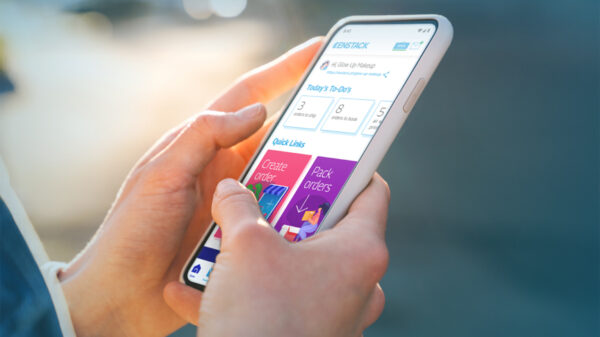Almost a quarter (23%) of online users always give apps and services permission to access their microphone or webcam, according to a global study of 15,000 people conducted by Kaspersky.
However, overall awareness of webcam security is promisingly high, with nearly six-in-ten (59%) worried that someone could be watching them through their webcam without them knowing, and 60% concerned that this could be done via malicious software. This points to the likelihood of more people proactively protecting their technology in the future as they adapt to remote working and the role of collaborative applications.
Over the past year, the reliance on video conferencing has led to a colossal growth in apps such as Microsoft Teams, which as of June 2020 grew by 894%, compared with its base usage in February 2020. It has also brought about a near worldwide shortage on webcams with many leading suppliers seeing vastly increased demand.
Understandably, with these technologies and apps helping people to navigate the events of the past year across work, social and entertainment needs, people have expressed a willingness to allow app access to their microphone and camera.
These tools have served as an enricher and facilitator of everyone’s sudden digital transitions, leading to 27% of people aged 25-34 always permitting access, according to Kaspersky research. This is less common among older age demographics, however, with 38% respondents aged 55 years and older revealing they never give apps and services such access.
Chart 1: Allowing microphone or webcam access in apps and services, by age breakdown
The best way to balance sufficient caution, while continuing to benefit from modern means of communication, would be to exercise mindful consideration around the apps and services people are using and what permissions they request. For example, if a video calling app has camera permissions that would make sense. But if there is an app without any relevant functionality requesting access to a person’s mic for no justifiable reason, it might be better to investigate and explore permissions.
These findings largely strike that balance and highlight people’s emerging need to feel safe in today’s digital world, without missing out on the role that cameras and collaboration apps are set to play in the new remote working world.
“For sure, many people aren’t instantly familiar with security protocols related to webcam usage and cybersecurity processes. However, what we are observing now is a strong positive trend of increased awareness around online safety and potential threats. This leads to more proactive consumer behavior like taking preventive actions and checking permissions before allowing video and microphone access. We also expect that the rise in cybersecurity consciousness will be supported by security awareness training arranged by businesses for their employees – especially as audio and video devices are now widely used for remote work,” comments Marina Titova, Head of Consumer Product Marketing at Kaspersky.
To feel safer while using webcams, and to ensure that the rise in virtual communication is met with an equal rise in people protecting their privacy and safety, Kaspersky offers the following advice:
- Invest in a simple, dedicated webcam cover to provide peace of mind when the tool isn’t being used.
- Use an effective security solution that offers advanced protection and covers multiple devices including PC, Mac, Android, and iOS devices. Apps like Kaspersky Security Cloud can protect you against unauthorized access to the mic.
- Analyze which of your current applications are currently permitted to access your webcam or microphone, and remove permissions where this is not necessary.
- For a deeper dive into online privacy on social networks, we recommend using our Privacy Checker, a simple tool that describes each and every setting in a chosen social network and gives advice on how to set it up for different levels of privacy on different platforms.
















































































































